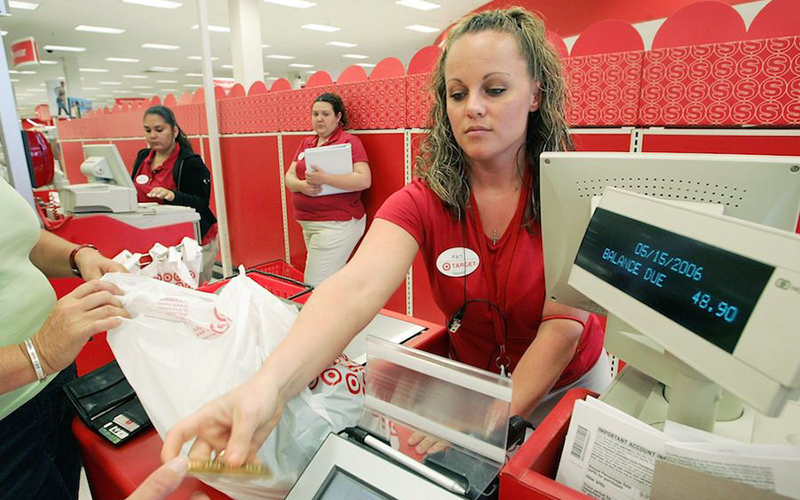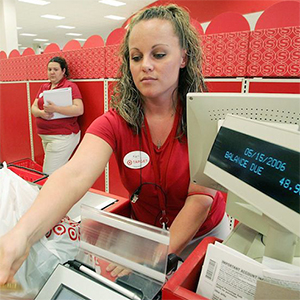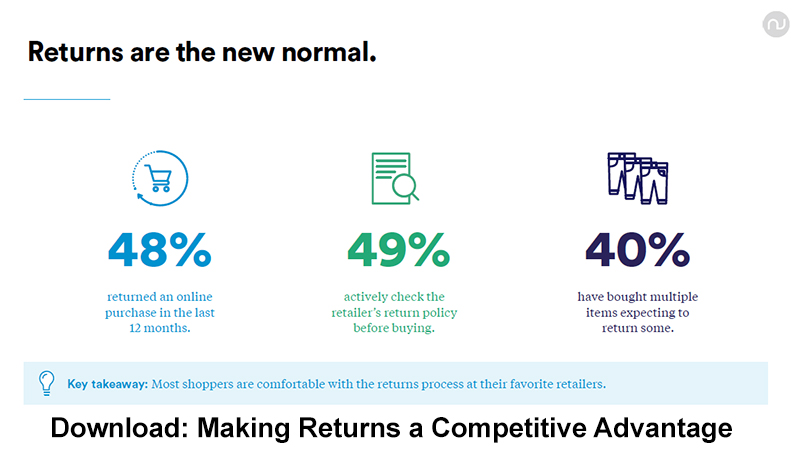E-commerce Returns Are the New Normal

With the number of online shoppers expected to reach 270 million by 2020 - driven largely by the popularity of mobile devices - retailers need to rethink their ecommerce strategies in order to keep up.
The opportunity for forward-thinking retailers is massive; Forrester Research predicts that online sales in the US alone will reach $523 billion by 2020, up 56 percent from 2015.
Today’s consumers have high expectations about the ease and convenience of their shopping experiences, particularly when it comes to returns.
When retailers are able to meet those expectations, they’re not only in a better position to improve the overall experience, they can also inspire more customer loyalty and create new revenue streams.
But what do retailers need to know if they want to take advantage of this new world order?
Today’s shoppers are charting new territory.
There’s no denying that returns aren’t what they used to be.
Previously, customers only had the option to buy items in stores, which meant there was less risk they wouldn’t like what they purchased since they’d already had the chance to interact with it in person.
As we entered the age of online shopping, however, it was only natural that more returns would follow. Now, it’s time for retailers to understand their customers’ evolving returns habits and expectations, and tune the experience with the same commitment given to the pre-purchase experience.
According to what we found in our consumer study, “Making Returns a Competitive Advantage”, these are the key ecommerce trends we think retailers should pay attention to in order to get ahead of the curve:
- “Bracketing”: 40 percent of online shoppers are buying multiple items to try at home, intending to keep what they like and return the rest. In other words, the bedroom is the new fitting room. This is most common for female, millennial, and higher-income shoppers, and occurs more frequently with apparel and home goods since fit and style are critical.
- Buy online, return in store: Increasingly, customers are taking advantage of the convenience of online shopping, but many of them want the option to return items in-store—38 percent prefer to return to a nearby store whenever possible, and 47 percent believe it’s easier to return to a store. The main reasons why they want this option is so that they can a) see an immediate refund and b) shop for additional items during their returns trip. It’s important to note that although they say they prefer in-store returns, they are more frequently returning by mail, so replicating the in-store benefits of quick refunds and exchanges in the online returns experience is also critical.
- Transparency: When customers choose to return items to an online retailer, they worry about it going into a black hole and are frustrated that they must continually check the status of their refund. Customers want to know what’s happening throughout the process.
What can retailers do?
Today’s busy shoppers expect hassle-free returns, but many find that the brands they shop with aren’t necessarily delivering a positive experience. If they’re displeased with the returns process, they will take their business elsewhere…and that can be an expensive loss for retailers.
Here are some tips for those looking to meet these new consumer demands:
- Be clear: 49 percent of customers who shop online research return policies before buying. Because of this, it’s imperative that retailers provide specific details about returns from the beginning of the purchasing process. This will help foster more trust and loyalty from consumers down the road.
- Provide omnichannel consistency: Today’s shoppers want to be able to count on a consistent customer service experience throughout the returns process. That means offering a reliably positive experience at every possible touchpoint, from call centers and in-store assistants to website, email, chatbots, and mobile.
- Create value: Make no mistake - online shoppers are savvy, and they’re always on the lookout for the best deals. 74 percent of shoppers we surveyed said that having to pay for return shipping would prevent them from making a purchase in the first place! By offering free and fast return shipping, you can gain an edge over your competitors by encouraging your consumers to come back time and time again.
- Communicate: Customers want to know what’s happening with their returns at any given time. Amazon, for instance, offers updates about where packages are and what the status of a pending refund is. Despite their returns process involving more hurdles, this transparency is a huge driver of satisfaction.
When it comes to ecommerce, the post-purchase experience - particularly around returns - has become more important than ever before. And with so many options literally at their fingertips, today’s consumers are savvier and more demanding than ever.
They want more information and transparency, not only around what or how they choose to buy in the first place, but also around what they can expect with returns. It’s high time retailers made the returns experience a priority.
SOURCE: It’s Official: Returns Are the New Normal
Article Topics
Forrester Research News & Resources
The Forrester Wave™: Supplier Value Management Platforms, Q1 2022 E-commerce Returns Are the New Normal Tomorrow’s Midmarket B2B eCommerce will Take Place in the Cloud Five Steps to Excellence in B2B eCommerce E-Commerce Reshaping the Logistics Landscape Real-Time Data Drives The Future Of Retail Digital Predator or Digital Prey? More Forrester ResearchLatest in Supply Chain
Microsoft Unveils New AI Innovations For Warehouses Let’s Spend Five Minutes Talking About ... Malaysia Baltimore Bridge Collapse: Impact on Freight Navigating TIm Cook Says Apple Plans to Increase Investments in Vietnam Amazon Logistics’ Growth Shakes Up Shipping Industry in 2023 Spotlight Startup: Cart.com is Reimagining Logistics Walmart and Swisslog Expand Partnership with New Texas Facility More Supply Chain













